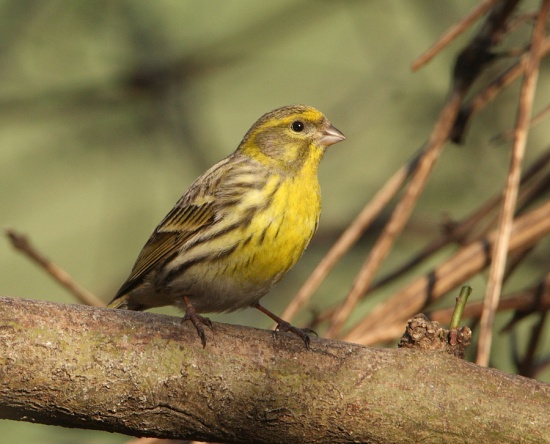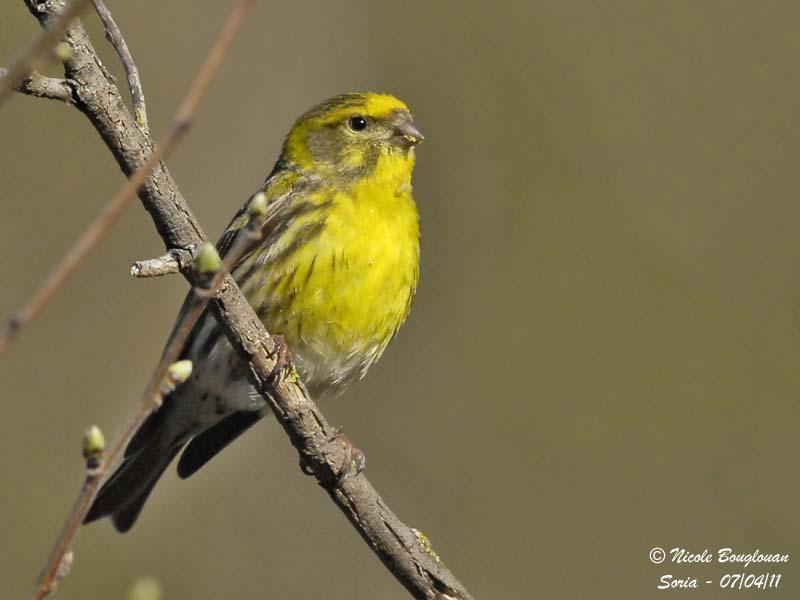
Serinus serinus
SUBFAMILY
Carduelinae
TAXONOMY
Serinus serinus Linnaeus, 1766.
OTHER COMMON NAMES
English: Serin; French: Serin cini; German: Girlitz; Spanish:
Verdecillo.
PHYSICAL CHARACTERISTICS
European serins are small finches, with a body length of about
4.3 in (11 cm). They have a short, strong, pointed beak and a
slightly forked tail. The male is colored greenish streaked with
black on the back, with dark wings and tail, and a yellow rump,
head, and chest. The female is darker and duller, and much
less yellow.
DISTRIBUTION
The European serin breeds widely in Europe and around the
Mediterranean basin, including parts of coastal North Africa. It
winters in more southern regions of its range.
HABITAT
The European serin inhabits wooded and shrubby hillsides,
and also utilizes well-vegetated agricultural areas, such as vineyards,
orchards, and plantations.
BEHAVIOR
The European serin is a migratory species. It is gregarious, especially
during the non-breeding season when it occurs in flocks,
often with other finches. The male defends a breeding territory
and attracts a mate by an aerial display and melodic song.
FEEDING ECOLOGY AND DIET
The European serin feeds on grains and tree seeds.
REPRODUCTIVE BIOLOGY
The nest is built in a tree or bush, usually 6.6–10 ft (2–3 m)
above the ground. Eggs are laid from March onward in North
Africa, from April on in southern Europe, and in May in central
Europe. There is more than one brood per year.
CONSERVATION STATUS
Not threatened. A widespread and abundant species.
SIGNIFICANCE TO HUMANS
This close relative of the canary is sometimes kept as a cagebird.
Other popular Animals
Photo Gallery of - European serin




 Animalia Life
Animalia Life